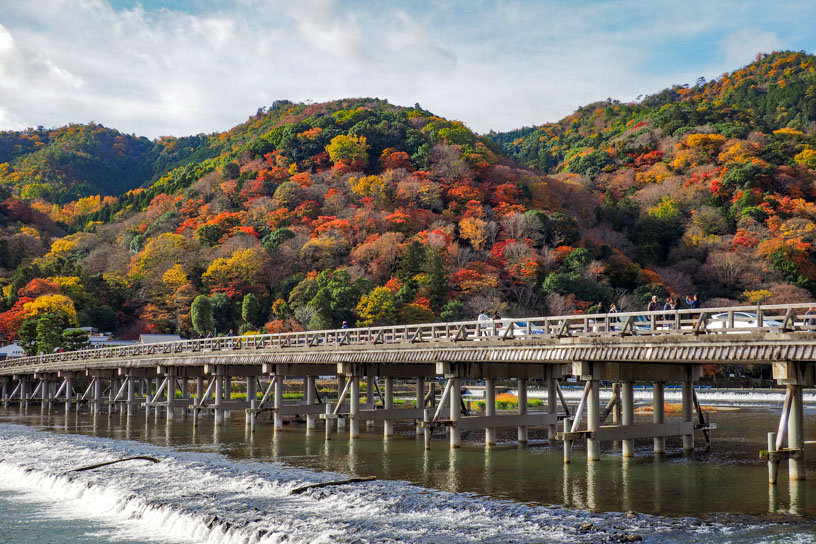
When it comes to Arashiyama, the first thing that comes to mind is the Togetsukyo Bridge. Spanning the Katsura River, the 155-meter-long Togetsukyo Bridge has become the symbol of Arashiyama, attracting numerous tourists. Although I mentioned it spans the Katsura River, in reality, upstream it becomes the Oigawa River, and downstream it changes its name to the Katsura River, divided by the Togetsukyo Bridge. The name Togetsukyo, or “Moon Crossing Bridge,” is said to have originated from Emperor Kameyama’s expression of awe as he observed the moon moving across the bridge during the Kamakura period.
Arashiyama is renowned for its beauty in each season, listed among the ‘100 Famous Cherry Blossom Spots in Japan’ during spring and the ‘100 Famous Autumn Foliage Spots in Japan’ during fall. It showcases different faces with the changing seasons, presenting cherry blossoms, fresh greenery, autumn leaves, and snow. Across the Oigawa River, the area includes Mt. Ogura, Mt. Kameyama and their foothills on the east side, and the area of the Arashiyama Sanzan mountains of Mt. Matsuo, Mt. Arashiyama and Mt. Karasugatake on the west side. Together, this area is commonly called Arashiyama.
嵐山といえば、まずおもいうかぶのが渡月橋。桂川に架かる長さ155mの渡月橋は嵐山のシンボルとなっており、多くの観光客が往来します。桂川に架かるといいましたが、実はな渡月橋をはさんで上流が大堰川(おおいがわ)、下流から桂川と呼称が変わるのです。渡月橋の名の由来は、鎌倉時代に亀山上皇が橋の上を月が移動していく姿を眺めて感想を述べたことからと言われています。
嵐山は、桜では「日本さくら名所100選」に、紅葉では「日本紅葉の名所100選」に選ばれているほどで、桜や新緑、紅葉、雪など、四季の移ろいとともに異なる顔を見せてくれます。大堰川(おおいがわ)を挟んで、東側の小倉山・亀山、さらにはその麓を含んだ地域と、西側の松尾山・嵐山・烏ヶ岳の嵐山三山の地域とを合わせて、一般的にこの一帯を嵐山と呼んでいます。
